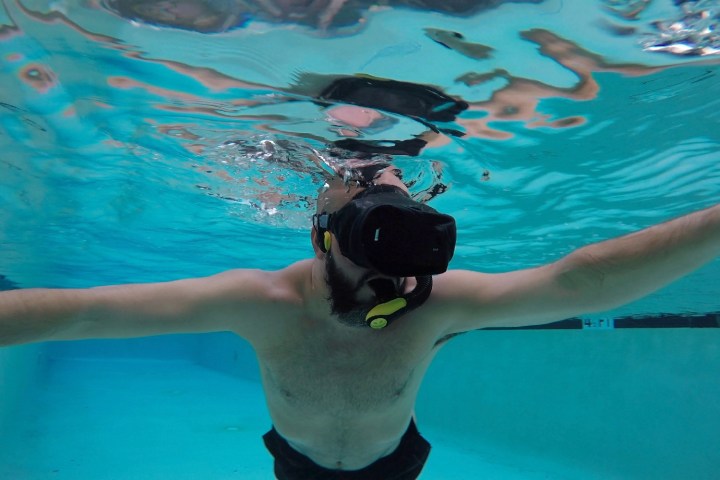
That’s what friends Stephen Greenwood and Allan Evans may have achieved when they decided to combine a scene from a popular Netflix series with virtual reality headsets to create … floating underwater VR. Sure, it sounds a bit crazy, but it’s hard not to be a little intrigued.
“We were out in San Francisco one night,” Greenwood, who is director of creative development at Discovery Digital Networks, told Digital Trends. “I had just been watching the show Stranger Things on Netflix, and was really inspired by one scene in the show where one of the characters is in a sensory deprivation tank. We started talking about sensory deprivation, and all of a sudden we came up with the idea of using a VR headset in one of these sensory deprivation tanks.”

Evans, co-founder of headset maker Avegant, immediately set about thinking of ways to develop a prototype to see if the idea was worth exploring further. The very next day he got hold of a diving mask and 3D-printed two blocks to go inside it to allow a waterproof Android smartphone to be slotted inside like an aquatic Google Cardboard device. It was then just a matter of finding a swimming pool to test the creation in.
“The first experience I wanted to test out was simulating a space environment,” Greenwood continued. “I was able to track down a CG-rendered video of the International Space Station floating above the Earth. The impact was pretty much immediate. Even though it’s not the highest resolution or fidelity, there was a moment where — for a brief second — you really felt like you were an astronaut floating in space.”
Evans is quick to point out that this is in no way a finished product. “It’s the earliest possible stage of a prototype,” he said. “It couldn’t be any earlier.”
They’re not finished yet, though. “The next step is to see if we can incorporate a positional tracking system so that, rather than just being able to turn your head to look around at a 360 video, there’s the ability to swim toward objects in virtual reality,” he continued. “That’s going to be a big step to us.”
Hey, at the very least this neat hack promises to make bath time infinitely more enjoyable!


